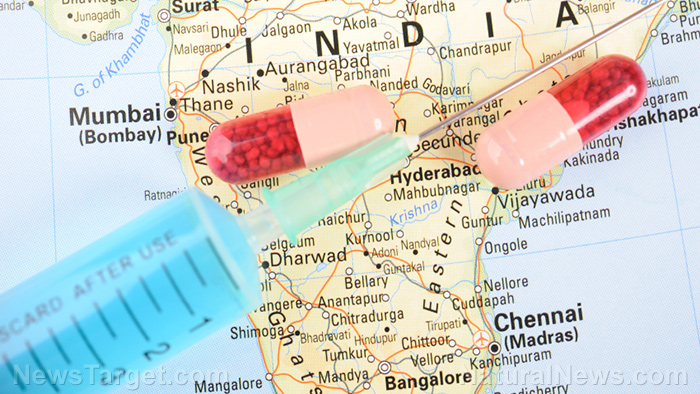Packaged food and beverages in the U.S. are ultra-processed and ultra unhealthy
05/26/2020 / By Evangelyn Rodriguez

Food supply has a huge impact on the health status of a given population. It also plays a central role in the development of chronic diseases. In the U.S., the food supply is dominated by packaged foods and beverages, and about 80 percent of the total calories consumed by Americans come from these store-bought products. This shows that food and beverage manufacturers hold the key to creating a healthier food environment and improving the diet of Americans.
But while dietary guidelines are routinely updated to help improve public health, American consumers, together with researchers and policy makers, are still left in the dark as to what kinds of food products (whether healthy or unhealthy) are made available on grocery shelves, mainly due to a lack of regular tracking and reporting. This, health experts point out, is a problem that needs to be addressed with utmost urgency.
In a recent study published in Nutrients, American and Australian researchers found, after a cross-sectional assessment of the state of the U.S. packaged food and beverage supply, that Americans are overexposed to ultra-processed and generally unhealthy foods. Compared with Australia and the U.K., the U.S. food supply is more processed and has a higher median sugar and sodium content.
These food components, together with calories and saturated fat, have been labeled by the World Health Organization (WHO) as “nutrients of concern.” To ensure consumer access to, and the affordability of, healthy food choices, the agency has recommended that the levels of these nutrients of concern be reduced in all food products.
The U.S. food supply is dominated by foods high in fats, calories, salt and sugar
According to the researchers, even a small reduction in the levels of these nutrients of concern in the food supply could lead to large health gains at relatively low cost, and health experts agree. They believe this could be a promising solution to the growing global chronic disease crisis. Based on the WHO’s Global Health Observatory data, diseases like diabetes, cardiovascular disease, lung disease and dementia have been causing increasing numbers of deaths worldwide in recent years.
Because of the impact of food supply on the health of consumers, the researchers assessed the state of packaged foods and beverages in the U.S. to provide American consumers information about the nutritional composition and indicators of healthfulness and processing across the country’s largest manufacturers. They hope that by doing so, they can encourage manufacturers to replace unhealthy products and inform the U.S. government where to implement policies to improve the healthfulness of the food supply.
“To say that our food supply is highly processed won’t shock anyone, but it’s important that we hold food and beverage manufacturers accountable by continually documenting how they’re doing in terms of providing healthy foods for consumers. And the verdict is they can and should be doing a whole lot better,” said Abigail Baldridge, the lead author of the study.
After analyzing data collected by Label Insight on more than 80 percent of packaged foods and beverages sold in the U.S., Baldridge and her team found that 71 percent of 230,156 food products were ultra-processed. These include products like breads, salad dressings, snack foods, sweets and sugary drinks. Using the NOVA Food Classification System developed by the University of Sao Paulo in Brazil, the team also found that 86 percent of the products sold by the top 25 U.S. manufacturers by sales volume can be classified as ultra-processed.
NOVA defines ultra-processed foods and beverages as industrial formulations made entirely or mostly from food-derived oils, fats, sugar, starch and proteins. This means that these products were synthesized in laboratories using hydrogenated fats and modified starch. In terms of the levels of nutrients of concern, the researchers found that bread and bakery products were consistently among the highest third across all four nutrient categories. In fact, breads sold in the U.S. contain 12 percent more sodium than breads sold in the U.K., where strategies to reduce the sodium content of packaged foods have recently been implemented.
“Food and beverage products continuously evolve, and reports like these highlight opportunities to make critical changes within specific manufacturers or product categories to reduce saturated fat, salt and sugars,” Baldridge said.
Dietary guidelines recommend limiting the consumption of foods rich in these components as they have been found to promote obesity, heart disease, Type 2 diabetes and some types of cancer.
However, collecting data on the U.S. food supply is a challenging task because it is so large and, according to Baldridge, about 20 percent of packaged foods turn over every year.
“We need to better capture real-time information of our constantly changing food supply if we’re going to track and improve its healthfulness,” said Dr. Mark Huffman, an associate professor at Northwestern University Feinberg School of Medicine in Chicago and co-author of the study.
Get the latest updates about the state of the U.S. food supply at FoodSupply.news.
Sources include:
Tagged Under: American diet, calories, food supply, grocery, harvest, heart disease, nutrients, obesity, packaged foods, poor nutrition, products, research, salt, saturated fats, sugar, sugary drinks




















